

others
EUR/USD bounces back as US Dollar retreats after weak jobless claims data – Crypto News
- EUR/USD delivers a sharp recovery to 1.0750 as the US Dollar slumps despite Fed’s hawkish interest-rate guidance.
- Fed’s Collins joins Kashkari to support keeping interest rates steady for a longer period.
- The ECB is expected to deliver three rate cuts this year.
EUR/USD discovers strong buying interest near 1.0730 in Thursday’s early New York session. The major currency pair recovers even though speculation that the European Central Bank (ECB) will start lowering its interest rates in June remains firm. A sharp decline in the Eurozone inflation has allowed ECB policymakers to consider that prospect.
Most ECB policymakers also expect that the rate-cut cycle will continue beyond June as inflation is on course to return to the desired rate of 2%, and the service inflation doesn’t seem stubborn anymore. Services inflation softened to 3.7% in April after remaining steady at 4.0% for five straight months. Traders are pricing in three rate cuts by the ECB this year.
Contrary to the majority of ECB policymakers, who broadly agree over expectations of reducing interest rates from June, one of its Governing Council members and Governor of Austria’s central bank, Robert Holzmann, said in Wednesday’s early New York session that he doesn’t see a reason to cut key interest rates “too quickly or too strongly,” Reuters reported.
Daily digest market movers: EUR/USD rebounds as US Dollar falls back
- EUR/USD recovers sharply from 1.0730 as the US Dollar comes under pressure after weak Initial Jobless Claims (IJC) data. For the week ending May 3, individuals claiming jobless benefits for the first time were higher at 231K than expectations of 210K and the prior reading of 209K, upwardly revised from 208K. Rising jobless claims have deepened fears of easing labor market conditions.
- Earlier, the US Dollar extends its upside as US Federal Reserve (Fed) policymakers maintaining hawkish guidance on interest rates. On Wednesday, Boston Fed Bank President Susan Collins favored interest rates remaining steady at their current levels until she gets greater confidence that inflation will sustainably return to the desired rate of 2%. Collins added “A slowdown in activity will be needed to ensure that demand is better aligned with supply for inflation to return durably.” Her comments indicated that the US economic outlook is strong even though interest rates remain higher for a longer period.
- Apart from Collins, Minneapolis Fed Bank President Neel Kashkari also remained lean towards maintaining the current interest rate framework as it is for the entire year. Kashkari remains concerned over stalling progress in inflation declining to 2% amid a strong housing market. When asked about an interest rate cut, Kashkari said weakness in the job market could justify it.
- This week, investors look at Fed speakers to project forward moves in the US Dollar due to the absence of top-tier US economic data. However, next week, the major trigger will be producer and consumer inflation data.. Hot inflation numbers would diminish prospects of rate cuts this year.
Technical Analysis: EUR/USD recovers from 1.0730
EUR/USD halts its two-day losing streak on Thursday. The major currency pair finds support near the 20-day Exponential Moving Average (EMA), which trades around 1.0732, suggesting that strength in the near-term outlook is intact.
The shared currency pair exhibits a sharp volatility contraction due to a Symmetrical Triangle formation on a daily timeframe. The upward-sloping border of the triangle pattern is plotted from October 3 low at 1.0448 and the downward-sloping border is placed from December 28 high around 1.1140.
The 14-period Relative Strength Index (RSI) oscillates inside the 40.00-60.00 range, suggesting indecisiveness among market participants.
Fed FAQs
Monetary policy in the US is shaped by the Federal Reserve (Fed). The Fed has two mandates: to achieve price stability and foster full employment. Its primary tool to achieve these goals is by adjusting interest rates. When prices are rising too quickly and inflation is above the Fed’s 2% target, it raises interest rates, increasing borrowing costs throughout the economy. This results in a stronger US Dollar (USD) as it makes the US a more attractive place for international investors to park their money. When inflation falls below 2% or the Unemployment Rate is too high, the Fed may lower interest rates to encourage borrowing, which weighs on the Greenback.
The Federal Reserve (Fed) holds eight policy meetings a year, where the Federal Open Market Committee (FOMC) assesses economic conditions and makes monetary policy decisions. The FOMC is attended by twelve Fed officials – the seven members of the Board of Governors, the president of the Federal Reserve Bank of New York, and four of the remaining eleven regional Reserve Bank presidents, who serve one-year terms on a rotating basis.
In extreme situations, the Federal Reserve may resort to a policy named Quantitative Easing (QE). QE is the process by which the Fed substantially increases the flow of credit in a stuck financial system. It is a non-standard policy measure used during crises or when inflation is extremely low. It was the Fed’s weapon of choice during the Great Financial Crisis in 2008. It involves the Fed printing more Dollars and using them to buy high grade bonds from financial institutions. QE usually weakens the US Dollar.
Quantitative tightening (QT) is the reverse process of QE, whereby the Federal Reserve stops buying bonds from financial institutions and does not reinvest the principal from the bonds it holds maturing, to purchase new bonds. It is usually positive for the value of the US Dollar.
-

 Blockchain19 hours ago
Blockchain19 hours agoOn-Chain Tokenization for Payments Professionals – Crypto News
-
Cryptocurrency6 days ago
Pi Community Highlights Pi Coin’s Slow Growth As ‘Strategic’ – Crypto News
-
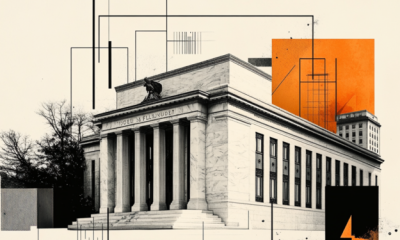
 others1 week ago
others1 week agoThere is more work to do on inflation – Crypto News
-

 Cryptocurrency1 week ago
Cryptocurrency1 week agoProfessor Coin: What’s Driving Cryptocurrency Adoption Around the World – Crypto News
-

 Blockchain1 week ago
Blockchain1 week agoCZ claps back against ‘baseless’ US plea deal allegations – Crypto News
-

 Technology1 week ago
Technology1 week agoApple ramps up India production amid China uncertainty, assembles $22 billion worth iPhones in a year – Crypto News
-
Business5 days ago
Cardano (ADA) and Dogecoin (DOGE) Eye For Bullish Recovery – Crypto News
-

 Business5 days ago
Business5 days agoWorldpay and FIS Deals Echo 2019’s Payments Megamergers – Crypto News
-
![Shiba Inu [SHIB] price prediction - A 70% rally next after 900%+ burn rate hike?](https://dripp.zone/news/wp-content/uploads/2025/04/Shiba-Inu-SHIB-price-prediction-A-70-rally-next-400x240.png)
![Shiba Inu [SHIB] price prediction - A 70% rally next after 900%+ burn rate hike?](https://dripp.zone/news/wp-content/uploads/2025/04/Shiba-Inu-SHIB-price-prediction-A-70-rally-next-80x80.png) Cryptocurrency1 week ago
Cryptocurrency1 week agoShiba Inu [SHIB] price prediction – A 70% rally next after 900%+ burn rate hike? – Crypto News
-

 others1 week ago
others1 week agoGold consolidates near all-time peak as bulls pause for breather – Crypto News
-
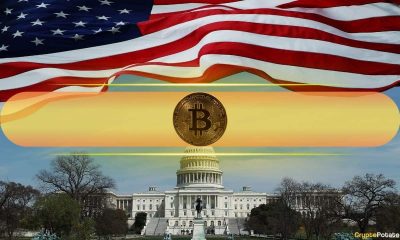
 Cryptocurrency7 days ago
Cryptocurrency7 days agoWhite House Mulls Bitcoin Reserve Backed by Gold and Tariffs – Crypto News
-

 Cryptocurrency5 days ago
Cryptocurrency5 days agoOKX Returns to US Market Following $505M DOJ Deal – Crypto News
-

 Blockchain1 week ago
Blockchain1 week agoXRP Price To Hit $45? Here’s What Happens If It Mimics 2017 And 2021 Rallies – Crypto News
-
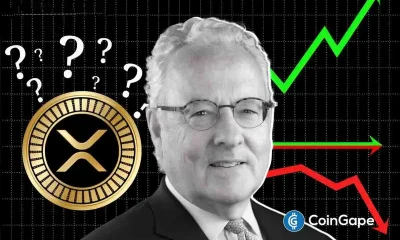
 others1 week ago
others1 week agoRipple Community Remains Disappointed With Hinman Report, What’s Next? – Crypto News
-

 Metaverse1 week ago
Metaverse1 week agoForget DeepSeek. Large language models are getting cheaper still – Crypto News
-

 others1 week ago
others1 week agoCrypto Strategist Sees Solana-Based Memecoin Surging Higher, Says One AI Altcoin Flashing Strong Chart – Crypto News
-
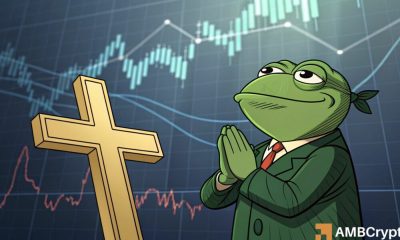
 Cryptocurrency1 week ago
Cryptocurrency1 week agoPepe is on the verge breakout to $0.0000078 as gold cross nears. – Crypto News
-

 Blockchain5 days ago
Blockchain5 days agoBitcoin online chatter flips bullish as price chops at $85K: Santiment – Crypto News
-
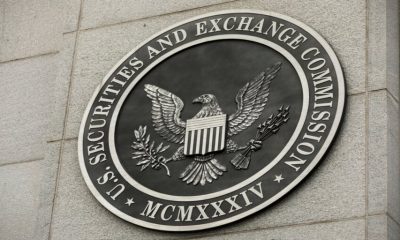
 Cryptocurrency5 days ago
Cryptocurrency5 days agoJudge Pauses 18-State Lawsuit Against SEC, Saying It Could ‘Potentially Be Resolved’ – Crypto News
-
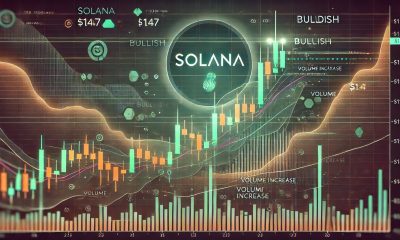
 Blockchain5 days ago
Blockchain5 days agoSolana Turns Bullish On 8H Chart – Break Above $147 Could Confirm New Trend – Crypto News
-
Technology4 days ago
Expert Predicts Pi Network Price Volatility After Shady Activity On Banxa – Crypto News
-

 Technology1 week ago
Technology1 week agoHow to transcribe and translate YouTube videos for free using Gemini 2.5 Pro? Check our step-by-step guide – Crypto News
-

 Cryptocurrency1 week ago
Cryptocurrency1 week agoFusaka fork takes shape as Pectra enters final stretch – Crypto News
-

 others1 week ago
others1 week agoBinance Issues Important Update On 10 Crypto, Here’s All – Crypto News
-

 Cryptocurrency1 week ago
Cryptocurrency1 week agoBitcoin – Here’s what’s next after sellers near exhaustion levels – Crypto News
-

 others1 week ago
others1 week agoOn-Chain Indicator Suggests Ethereum (ETH) Could Be Undervalued, According to Crypto Analyst – Crypto News
-

 others1 week ago
others1 week agoMexican Peso ends week strong as USD plunges on China tariff retaliation – Crypto News
-

 Blockchain1 week ago
Blockchain1 week agoOn-Chain Clues Suggest Bitcoin Bounce Might Be a False Signal—Here’s What to Know – Crypto News
-

 others1 week ago
others1 week agoChina’s Copper imports drop – ING – Crypto News
-

 Cryptocurrency6 days ago
Cryptocurrency6 days agoA decade in, Liberland needs the Bitcoin standard more than ever – Crypto News
-
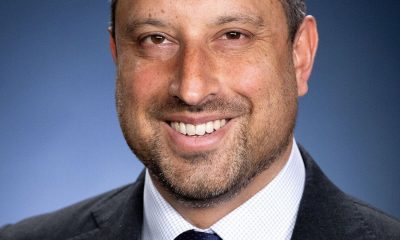
 Technology5 days ago
Technology5 days agoIndia, Australia explore bilateral data-sharing treaty to tackle cybercrime – Crypto News
-

 Technology5 days ago
Technology5 days agoMoto Book 60 laptop, Pad 60 Pro launched in India: Price, features, battery and more – Crypto News
-
Business5 days ago
Coinbase Reveals Efforts To Make Its Solana Infrastructure Faster, Here’s All – Crypto News
-
Technology5 days ago
Coinbase Reveals Efforts To Make Its Solana Infrastructure Faster, Here’s All – Crypto News
-
others5 days ago
Coinbase Reveals Efforts To Make Its Solana Infrastructure Faster, Here’s All – Crypto News
-
others4 days ago
How High Should Dogecoin Price Rise to Turn $10K to $100K? – Crypto News
-

 Technology1 week ago
Technology1 week agoPrice drop on 43 inch TVs: Grab the best deals on Samsung, Sony, Xiaomi and more, up to 57% off – Crypto News
-
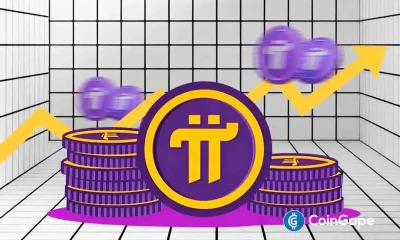
 Technology1 week ago
Technology1 week ago3 Altcoins to Buy as US Senate Banking Chair Gives August Deadline For Major Crypto Bills – Crypto News
-
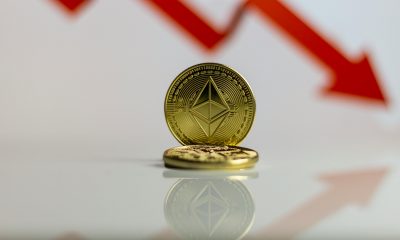
 Blockchain1 week ago
Blockchain1 week agoBoosting Ethereum: Bankless Cofounder Lays Out New Vision For Price Surge – Crypto News
-
![Bearish sequence in Nifty favors downside [Video]](https://dripp.zone/news/wp-content/uploads/2025/02/Bearish-sequence-in-Nifty-favors-downside-Video-Crypto-News-400x240.png)
![Bearish sequence in Nifty favors downside [Video]](https://dripp.zone/news/wp-content/uploads/2025/02/Bearish-sequence-in-Nifty-favors-downside-Video-Crypto-News-80x80.png) others1 week ago
others1 week agoDow Jones recovers ground to post one of its best weeks in years – Crypto News
-

 Cryptocurrency1 week ago
Cryptocurrency1 week agoScottish School Will Accept Bitcoin Payments, May Launch BTC Reserve – Crypto News
-

 Blockchain1 week ago
Blockchain1 week ago‘Bitcoin Standard’ author to develop Austrian economics curriculum for UK school – Crypto News
-

 Business1 week ago
Business1 week agoMichael Saylor Hints At Another MicroStrategy Bitcoin Purchase, BTC Price To Rally? – Crypto News
-

 others1 week ago
others1 week agoMantra Team Responds As The OM Token Price Crashes Over 80% In 24 Hours – Crypto News
-

 others1 week ago
others1 week agoUSD/CAD falls toward 1.3850 due to potential US recession, persistent inflation – Crypto News
-

 Blockchain1 week ago
Blockchain1 week agoCrypto markets ‘relatively orderly’ despite Trump tariff chaos: NYDIG – Crypto News
-

 others6 days ago
others6 days agoPresident Trump Planning Launch of New Monopoly-Inspired Crypto Game: Report – Crypto News
-
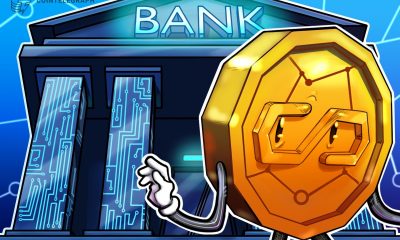
 Blockchain5 days ago
Blockchain5 days agoStablecoins’ dominance due to limitations of US banking — Jerald David – Crypto News
-

 Cryptocurrency5 days ago
Cryptocurrency5 days agoSOL remains bullish amid broader market stagnation – Crypto News
-
Business5 days ago
Crypto Whales Bag $20M In AAVE & UNI, Are DeFi Tokens Eyeing Price Rally? – Crypto News












